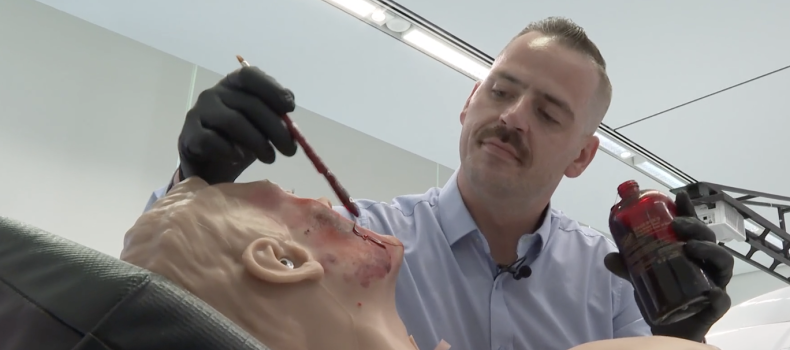Tom Baum, director of simulation and programming for CNESI and the Flight Center, was interviewed by Monica Robins of WKYC Channel 3 in Cleveland, about the use of special effects to enhance simulation experiences for nursing students.
It's not usual for first responders to do simulations of accidents or events that seem very real just so they can be prepared for the real thing when it happens.
That's exactly what nursing students at the Frances Payne Bolton School of Nursing at Case Western Reserve University are doing in their simulation labs.
They already have some high tech mannequins that can talk, move, breathe and have heart beats. But when Thomas Baum, the director of the simulation lab and programming gets through with them, they might look like they survived a plane crash or are suffering from a horrible infection.
For the last 12 years they've been using moulage, a technique that creates medical situations artistically, on their mannequins to make them appear as they would in a real-life situation.
Everything from burns, cuts, scrapes, allergic reactions, broken bones — pretty much anything you can think of, they've created.
Six hundred nurses come through the labs each week and they never know what to expect, which is another fact of real life.
Claire Linos is a senior and says she appreciates the fact that she can keep practicing until she gets it right.
"It just gives me the confidence to know I can do it when I need to in a real-life scenario," Linos said.
Baum says the silicone stick-on wounds are very expensive and he's made quite a few of his own taking inspiration from Halloween masks.
"I would rather students have an abnormal reaction in here than with a real patient," Baum said.


